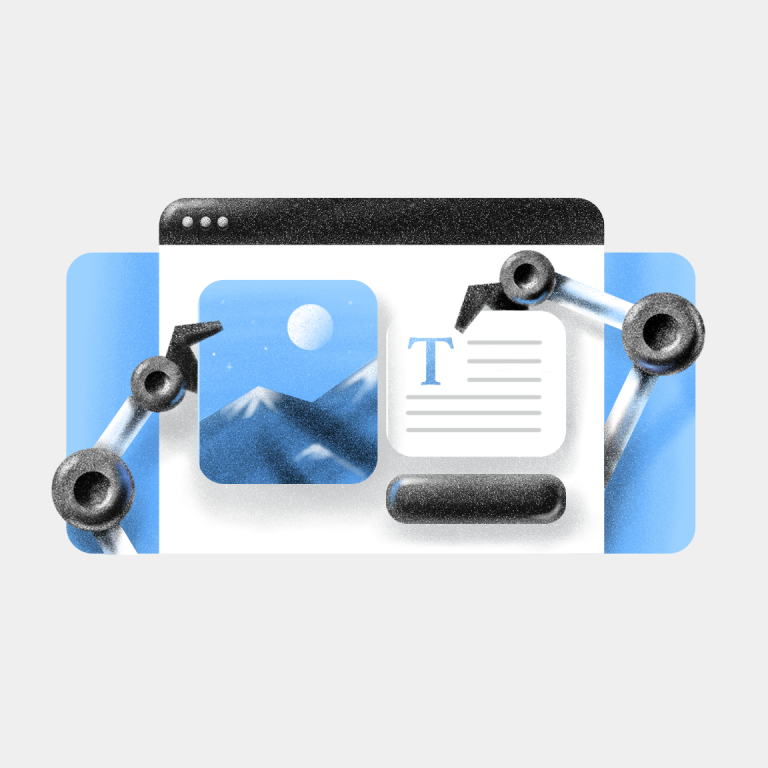An essential component of any successful sales strategy is sales prospecting. It’s not only advantageous but also crucial to make sure the leads you speak with are interested in your solution right now or in the future.
After years of experience, we discovered that finding and qualifying good sales prospects may be just as difficult as it is important. By giving you all the information you need to handle sales prospecting like a pro, this guide seeks to streamline the process.
Sales Prospecting: What Is It?
To bring in new business, sales prospecting entails locating and getting in touch with possible clients.
This can include reaching out to qualified leads via cold calls, emails, or LinkedIn messaging.
Gaining proficiency in these procedures will launch your sales process and propel your achievement.
Key Steps in Sales Prospecting:
1. Research
- Find out everything you can about a possible client.
- Evaluate their suitability for your offering.
- For B2B research, resources like social media and LinkedIn should be utilized.
2. Qualification
- Assess whether a potential customer is worthwhile to pursue.
- Sort prospects according to their prospective value and chance of becoming a customer.
- Prioritize using lead scoring techniques.
3. Outreach
- Customize your pitches to each potential customer.
- Make use of the proper channels, such as social media, phone, or email.
- Pay attention to adding value by sharing relevant materials or knowledge.
What is Prospecting in Sales?
Sales prospecting entails a manual,
Even while it takes a lot of time and work, this approach is more focused and customized, which frequently results in more profitable and meaningful client connections. Sales teams can effectively foster better relationships and accelerate business growth by customizing outreach initiatives for each individual prospect.
Steps in the Prospecting and Sales Process
Through the following stages, the sales prospecting process evolves into warm opportunities and ultimately leads to hot deals:
From Leads
Unqualified leads are sourced by sales and marketing. Marketing initiatives like webinars and sales initiatives like cold outreach are the sources of leads.
To Opportunities
Sales converts leads into prospects by determining if they are a good fit for the offering. Prospects are formed from qualified leads. Sales develop prospects, pique their curiosity, and make them into chances with a higher likelihood of making a purchase.
To Customers
Sales close deals, meaning that sales are either
8 Sales Prospecting Techniques
We already understand sales prospecting is the process of identifying and reaching out to potential customers with the goal of converting them into clients. It’s a crucial first step in the sales cycle that involves researching, engaging, and nurturing leads to build a pipeline of opportunities.
Here’s a brief overview of effective sales prospecting techniques:
1. View the Career Pages of Your Prospects
Prospecting can be more focused if one is aware of the priorities of the organization, which can be found on their career pages. You can customize your pitch to meet a company’s unique demands by finding out where they are investing, for example, by hiring for particular roles. The yearly financial filings of publicly traded corporations, known as Form
2. Apply the Sales Qualification Framework for GPCTBA/C&I
HubSpot’s GPCTBA/C&I framework has the following components that make sales qualification easier:
- GPCT (Timeline, Goals, Plans, and Challenges)
- BA (Authority and Budget)
- C&I (Bad Consequences and implications that are good)
This thorough framework ensures that every prospect satisfies your refined customer profile criteria and aids in the creation of a targeted list of questions.
3. Assign Ratings to Prospects
Prospects can be categorized as high, medium, or low according to their suitability, which is a valuable tactic.
High
- Exactly fits your ideal client
- Has a distinct business need that your solution can fulfill
- Frequently interacts with your website or social media accounts
- A
decision-maker has been reached - There is a common interest or connection (e.g., same college, LinkedIn connection)
Suggested effort: Five points of contact every alternate working day
Medium
- Fits your customer profile in part
- Has a business problem that your solution can help with
- Engages with your website or social media in some way
- Four touchpoints every other business day is the recommended effort.
Suggested effort: You can establish a connection with an influencer within the corporation.
Low
- Doesn’t match your ideal clientele
- Uncertainty surrounds the business challenge
- Very little to no engagement on your social media pages or website
- Cannot establish a connection with a
decision-maker or influencer
Suggested effort: Three points of contact every other working day
4. Batch Prospecting Sessions
Batch prospecting sessions are successful. Allocate two to three hours for concentrated prospecting, allowing for a quick
Depending on how long your session is, use a phone or timer to set intervals of 20, 30, or 45 minutes. Whenever the timer goes off, end each call. Set aside five minutes for administrative work and
5. Follow the Blogs of Your Prospects
Blogs written by prospects might provide insightful information about their requirements and interests. Even while it can take time to read every article, a methodical approach might be more effective:
- Open a new tab and read every pertinent post.
- Quickly scan the posts to find important themes.
- Choose the most fascinating twenty to thirty postings to read in further detail, paying particular attention to the pain spots and triggers as seen from the viewpoint of the prospect.
One can more effectively personalize emails or calls to prospects by using the pertinent information acquired; this will help to contextualize their situation and increase the impact of the initial contact.
6. Make Good Use of Both Phone and Email Communication
There is no one right way to make contact, and having a balanced approach is frequently the key to productive communication. The two most popular ways are phone and email, each with pros and cons of their own.
While cold calling may be preferred by some salesmen, cold emailing may be preferred by others. The secret is to make use of what is most comfortable while simultaneously realizing the advantages of less common approaches. Combining phone and online correspondence can improve outreach efficiency and accommodate varying preferences from prospects.
7. Continue After a Closed-Lost Transaction:
Rejection can be difficult, but it also presents a priceless teaching moment. Breakthrough Email, founder Bryan Kreuzberger, advises following up via email regarding a sale rejection. The purpose of this strategy is to get input and improve sales tactics.
This is a recommended template:
Hello, [prospect name]
I appreciate your reply. Although I’ve closed your file, let me ask you one last thing. Could you explain your lack of interest? Did I have the option to do anything differently?
I’d be grateful for any feedback you could provide since I’m constantly trying to improve.
I appreciate your time.
[Name]
This kind of direct email can assist in pinpointing areas that need work and maintaining a good relationship with the prospect.
8. Request References
According to a HubSpot poll of more than a thousand sales professionals, 66% of salespeople find that referrals from current clients are the best source of leads. These referrals often convert more easily.
To build a network of warm, responsive contacts, ask for referrals after converting a prospect into a customer. If necessary, follow up after they’ve used your product and consider offering incentives like discounts to encourage referrals.
4 Tools for Sales Prospecting
Based on your existing tools and prospecting needs, choose your tools. Try several things to see what suits your business the best.
1. HubSpot CRM
- Pricing: Free plans available
- Best for: Detailed company insights
- Features: Automatic business insights from a database of 20 million+ businesses, centralized prospect tracking, and customizable dashboards.
2. Hunter
- Pricing: Free plans available
- Best for: Email data aggregation
- Features: Find and verify email addresses, search by role, bulk or individual email production.
3. Kixie
- Pricing: Plans start at $35/month
- Best for: Calling and texting automation
- Features: Integration with HubSpot, Slack, and Pipedrive, supports
high-volume calls, easy to implement.
4. SalesHandy
- Pricing: Plans start at $7/month per slot
- Best for: Cold email outreach
- Features: Automated
multi-stage email sequences, personalized outreach, and easy integration with email providers.
These tools can enhance various aspects of the sales prospecting process, from lead generation to customer engagement.
What is Prospecting for B2B Sales?
Reaching out to possible business clients in order to create leads and increase sales is known as B2B sales prospecting.
In contrast to B2C, where consumer resistance frequently makes cold calling less successful, B2B cold calling is typically
Outbound techniques, such as cold calls and emails, are commonly used in
To enhance the sales process, inbound strategies like lead generation are frequently used in conjunction with this strategy.
Introduction to AI Sales Prospecting
Email efficacy can be increased by using AI in sales prospecting, but it’s important to utilize it correctly:
Use AI for Customization
Apply AI to create customized email subject lines based on dynamic inputs such as company news or
Steer Clear of AI for Static Data
Avoid employing AI for things like adding static data like job titles or company locations that are better suited for web scrapers. Tools like Clay are more effective for such simple data sets.
Begin with a Template
Create an email template with elements that are both static and variable. AI assistance or manual creation are both possible for this template.
Customize using AI
Make your email’s hook or opening lines uniquely your own and use the help of AI to up your content. With this method, the AI concentrates on improving particular email components while handling the static elements independently.
AI may greatly increase the effectiveness and personalization of your sales emails, which will guarantee higher engagement and outcomes.
Conclusion
Incorporating effective prospecting techniques and leveraging the right tools can transform your sales strategy. By understanding the stages of sales
Utilize frameworks like GPCTBA/C&I and classify prospects to streamline your efforts. Batch prospecting sessions and subscribe to prospects’ blogs to stay informed. Employ a mix of email and phone communication, and always seek referrals from satisfied customers.
Finally, AI can be harnessed to craft personalized email content while using tools for data aggregation and verification. Together, these practices and tools will boost your prospecting success and drive better results.
- How to Sell Online: The Ultimate Guide for Business Owners
- How to Sell Online Without a Website
- 30 Ways to Make Your First Sale Online
- 7 Mistakes That Prevent You From Making Your First Sale
- How to Work With Focus Groups to Test Your Niche
- How to Write Product Descriptions That Sell
- Tips to Make Your Products More Attractive
- Top Reasons for Returns and How to Minimize Them
- Navigating the Luxury Market: How to Create and Sell
High-End Products - How to Pay Yourself When You Own a Business
- 8 Different Shopper Types And How To Market To Them
- Mastering Sales Prospecting: The Ultimate Guide








